 Zerodha (Trading & Demat Account)
Zerodha (Trading & Demat Account)
FREE Equity Delivery and MF
Flat ₹20/trade Intra-day/F&O
 Zerodha (Trading & Demat Account)
Zerodha (Trading & Demat Account)
FREE Equity Delivery and MF
Flat ₹20/trade Intra-day/F&O

|
|
Published on Wednesday, February 14, 2018 by Chittorgarh.com Team | Modified on Tuesday, December 3, 2019

Chittorgarh, also called Chittaur, from the 7th century to the 16th, was the capital of Mewar under the Rajputs. Chittaur evokes memories of great heroism and sacrifice by Rajput men and women in the intermittent battles that they had to fight against invaders from Northwest or Delhi. Chittaur witnessed both the ravages of war and the triumphs of the spirit. Allaudin Khilji who coveted Queen Padmini of Chittaur, invaded the city in 1303 A.D. Queen Padmini and the women of the court sacrificed themselves in a pyre of fire rather than submit to anybody. This supreme sacrifice has been called 'Jauhar' and epitomises the fiery spirit of the Rajputs of the day. The city stands strewn with monuments and battlements as evidence of the blood and gore that it went through in medieval times.
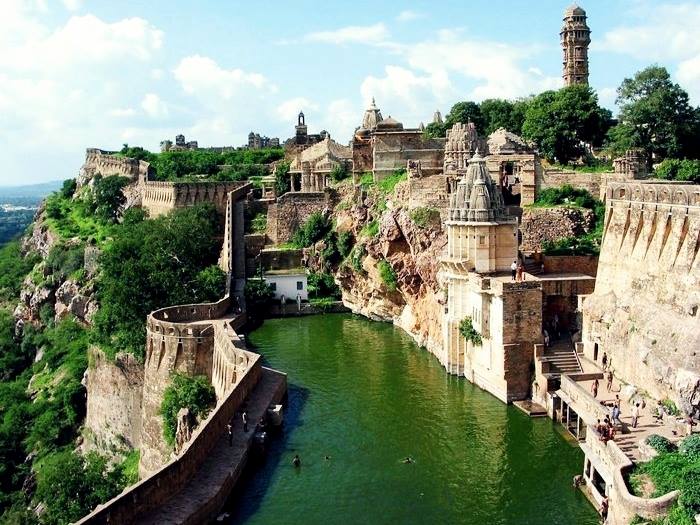
The Chittaur Fort is the best known fort in Rajasthan. Its origins are traced to the Pandavas of Mahabharata. It is said that Bhima, one of the Pandava brothers, built the fort. Standing on 180 meters high hill, the fort covers an area of 700 Acres. Inside it is the Meera and Khumba Shyam Temple. It is associated with Meera, a mystic poetess devoted to Lord Krishna whose life and bhajans have become part of the folklore and literary traditions of the region and several parts of India.
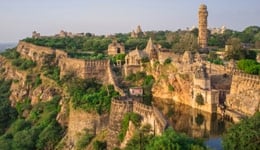
Chittorgarh (Chittaurgarh) is the epitome of Rajput pride, romance and spirit. It reverberates with history of heroism and sacrifice, which is evident as it echoes with the tales sung by the Bards of Rajasthan. The main reason for visiting Chittorgarh is its massive hilltop fort, which is a depiction of Rajput culture and values.
The fort of Chittor is regarded as one of the most outstanding forts of the country and is indeed the 'Pride of Rajasthan State'. The formidable fort is perched atop a 180 meter high hillock covering a massive area of 700 acres and is a standing sentinel to the courage and valour of Chittorgarh. It is belived that the fort was build by the Mauryans in 7th century and further strucres were added to it by the successive Mewar rulers.
The one mile long serpentine road to the fort is quite steep and exhastive. The fort is approached through seven huge gateways or 'pols', which are guarded by watch tower and massive iron spiked doors.
Chittorgarh fort is also called as Water Fort. The fort had 84 water bodies, out of which only about 22 exist today. These Include talabs (ponds), kunds (wells), and baories (stepwells). All the talabs have a natural catchment. The kunds and baories are located below the talabs, so that even the seepage from the latter is not lost.
The fort spreads over 700 hectares, 40 per cent of which are given over to water bodies. The average reservoir depth is about 2 m. Taken together, this means these reservoirs can store about 4 billion litres of water.
In a year of more than normal rainfall (average annual rainfall: 700 mm), enough water would be stored to last the next 12 months. Even after water loss due to seepage and evaporation and other causes, an army of 50,000 could live in the fort for four years without fear of thirst.
Built in 1440 AD by Maharana Kumbha to commemorate his victory over Mohamed Khilji this 9-storyed tower is adorned by sculptures of Hindu deities around. It is situated inside the Chittorgarh Fort.There are around 157 narrow steps leading to the terrace where the balconies give a beautiful top angle view of the whole town. When illuminated in the evening, the tower reflects a mesmerizing effect and the view is worth capturing in the camera. The topmost storey features an image of the Jain Goddess, Padmavati. Rana Kumbha also had carved the word 'Allah' in Arabic nine times in the third storey and eight times in the eighth.
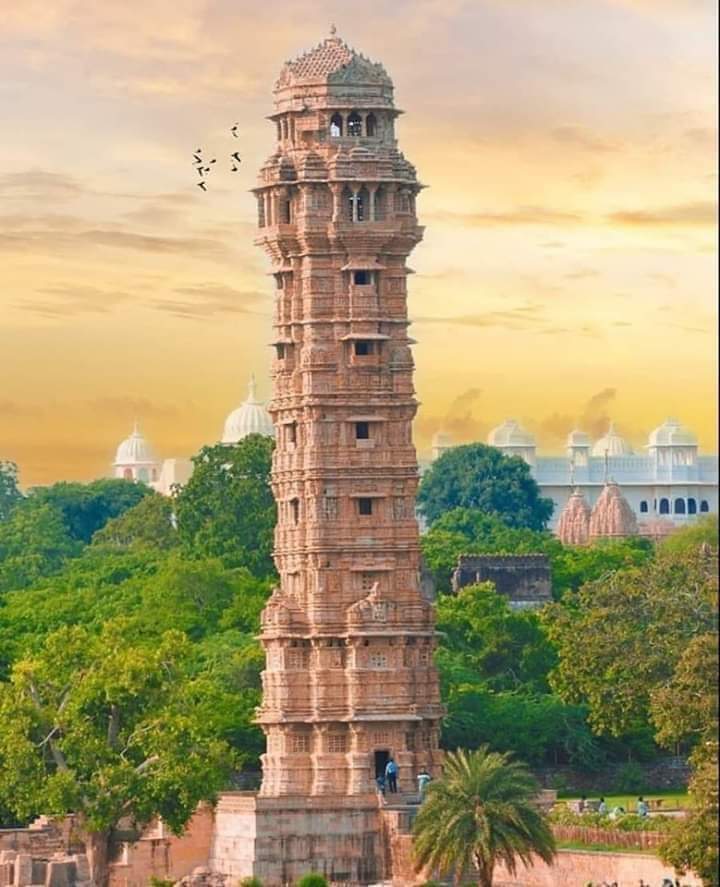
कीर्ति स्तम्भ भारत के राजस्थान के चित्तौड़गढ़ में स्थित एक स्तम्भ या टॉवर है। इसे मेवाड़ नरेश राणा कुम्भा ने महमूद खिलजी के नेतृत्व वाली मालवा और गुजरात की सेनाओं पर सारंगपुर विजय के स्मारक के रूप में सन् 1440 और 1448 के मध्य बनवाया था।
600 साल पहले ना सरिया थी ना JCB मशीन थी फिर भी 9 मंजिली ये कलाकृति दुनिया के लिये अजब नमूना है।
Note:
Dedicated to Adinathji the 1st Jain Teerthankar adorned by the naked figures of the Digambars [Adherents of the Digambar sect who does not believe in covering the natural body] A narrow stairway goes through seven stories of the tower to the top.The tower was built by a Jain merchant Jeeja Bhagerwala during the reign of Rawal Kumar Singh for the glory of Jainism which is 22 metre high, 30 feet wide at the base and narrows down to 15 feet at the top. Kirti Stambha is older than another tower in the same fort, known as the Vijay Stambha 'Tower of Victory'.
For more details...
Gaumukh Reservoir symbolizes the exuberance of its homely fort more than the fort itself. A deep tank filled by a spring coming from a 'cow mouth', situated at the edge of the cliff. It is located near temple, and is a complete natural beautyand also feeding fishes here is considered to be an auspicious ritual. The Gaumukh Reservoir is one of the eighty four water bodies of the fort is filled with water to this day. It is believed that after touring various holy places in India, Hindus need to visit the Gaumukh Kund in Chittorgarh to complete their holy journey.

The ruined edifice of great historical and architectural interest, being the most massive monument in the fort of Chittaur, this palace was named after the greatest of the Sisodia's. The palace is believed to have underground cellars where Rani Padmini and other women committed Jauhar. This place was once the home of the famous bhakti poetess Meerabai.

Padmini Palace was once the palatial abode of the exquisitely beautiful Rajput queen, Rani Padmini, the wife of King Rawal Ratan Singh. Revered as an epitome of beauty, Rani Padmini was the daughter of a Sinhala ruler Gandharvasen and plays a crucial role in the history of the gallant Rajput warriors. The palace, once the scene of an incident directly responsible for the bettle between Allauddin Khiliji and Rana Ratan Singh, is a distinctly feminine structure that overlooks a pleasant pool.

Build by Maharana Kumbha in 1449, this lord Vishnu Temple has beautiful idols in its sanctum, mendap and pillars. The Meera temple is constructed to be dedicated to Meera Bai and is a very famous Hindu temple. The splendid work of art on the temple attracts a large number of tourists and also the temple reflects the Indo-Aryan style of architecture which was very famous in those times and is still a part of our cultural heritage. The Meera Bai temple and the Kumbha Shyam temple are both built on the same ground and on the outer side of the Meera Bai temple there is a carved statue of five human bodies with one head which symbolizes the fact that people of all castes and creed are the same and no differences exists.

This temple belongs to the 14th century and it is said that the temple which is placed across Padmini Palace was originally a temple which is also called 'Temple of the Sun God', which was built here during the 8th century. After the attack by Allaudin Khilji, this temple was destroyed. Dedicated to Goddess Kali also known ak Kalika Mata, this temple is an architectural gem that belongs to the Pratihara times. Thus, this temple is not only a popular religious site but is also quite popular amidst tourists and art lovers.

Build by Maharana Fateh Singh this huge palace is of morden style. This place has been named Fateh Prakesh after Maharana Fateh Singh. There is a big Ganesh idol, a fountain, and different frescoes which are to be seen to be believed. It is located inside the Chittorgarh Fort. It is now a museum, has a rich collection of sculptures from temples and buildings in the Fort. It also exhibits various kinds of weapons which includes daggers, old shields, knives, helmets, axes, uniform of soldiers and farsa. Clay models of local tribes wearing traditional outfits are also a part of the exhibits of the museum.
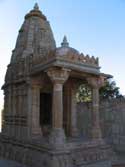
Satbis Deori is a holy temple for Jains and is situated inside the Mohan Magri. At present, There are six jain temples on the fort of Chittor. The largest and chief among them is the temple of Bhagawan Adinatha with fifty-two devkulikas. The place of this temple is known as 'Satbis Deori'. It means that at some time in the past, there were twenty-seven temples here.
The Digamabar Jain Kirtistambh and seven-storied Kirtistambh are two among them. The seven-storied Kirtistambh was built in the fourteenth century in memories of Bhagawan Adinatha. The Satbis Deori Temple is a beautiful structure that displays various traditions and beliefs of the Jain religion and culture.
For more details...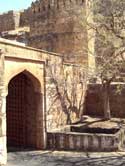
To enter in to the Fort Of Chittorgarh, the person has to go through seven huge gates(Pol). Each gate is different in its name, built as massive stone structures with secure fortifications for military defense. Below is the list of these gates:


FREE Intraday Trading (Eq, F&O)
Flat ₹20 Per Trade in F&O
|
|